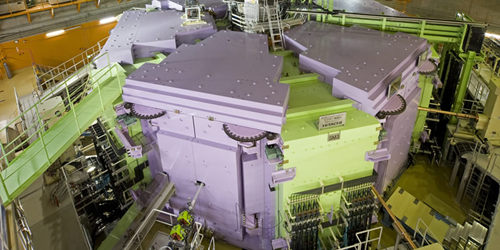Proton Effective Charge Depends on Neutron Population
When calculating properties of heavy nuclei, theorists often focus on a subset of the nucleons (protons and neutrons) and assume that these particles have “effective charges” that somehow compensate for all the nucleons that are ignored. However, choosing the appropriate effective charges can be challenging. Now Andrea Jungclaus of the Institute for the Structure of Matter in Spain and her colleagues have provided the first clear experimental evidence that effective charges depend on isospin—the neutron–proton ratio—and have measured this dependence in an unambiguous way [1]. The new information should improve the accuracy of calculations for heavy, neutron-rich nuclei, for which there is limited experimental data.
The nuclear shell model assigns each nucleon to a single-particle state that is similar to an electron orbital in an atom. Researchers have previously shown that the effective charge is different for different nuclei, but it hasn’t been clear whether the variation was attributable to differences in the orbital configuration of the nuclei or to differences in isospin (or both). Jungclaus and her colleagues isolated the effect of isospin by comparing excited-state properties of cadmium-130 with those measured previously in cadmium-98. These two nuclei have very different numbers of neutrons and thus a large difference in isospin. But they have similar orbital configurations since both have full neutron shells and are just two protons short of having full proton shells.
The researchers observed cadmium-130 nuclei produced when a uranium beam at RIKEN in Japan collided with a beryllium target. They combined shell model calculations and the new data along with previous data to determine an effective proton charge of +1.35 for this neutron-rich nucleus, compared with +1.17 for cadmium-98, suggesting an unexpectedly strong isospin dependence of the effective charge.
–David Ehrenstein
David Ehrenstein is a Senior Editor for Physics Magazine.
References
- A. Jungclaus et al., “Excited-state half-lives in 130Cd and the isospin dependence of effective charges,” Phys. Rev. Lett. 132, 222501 (2024).




